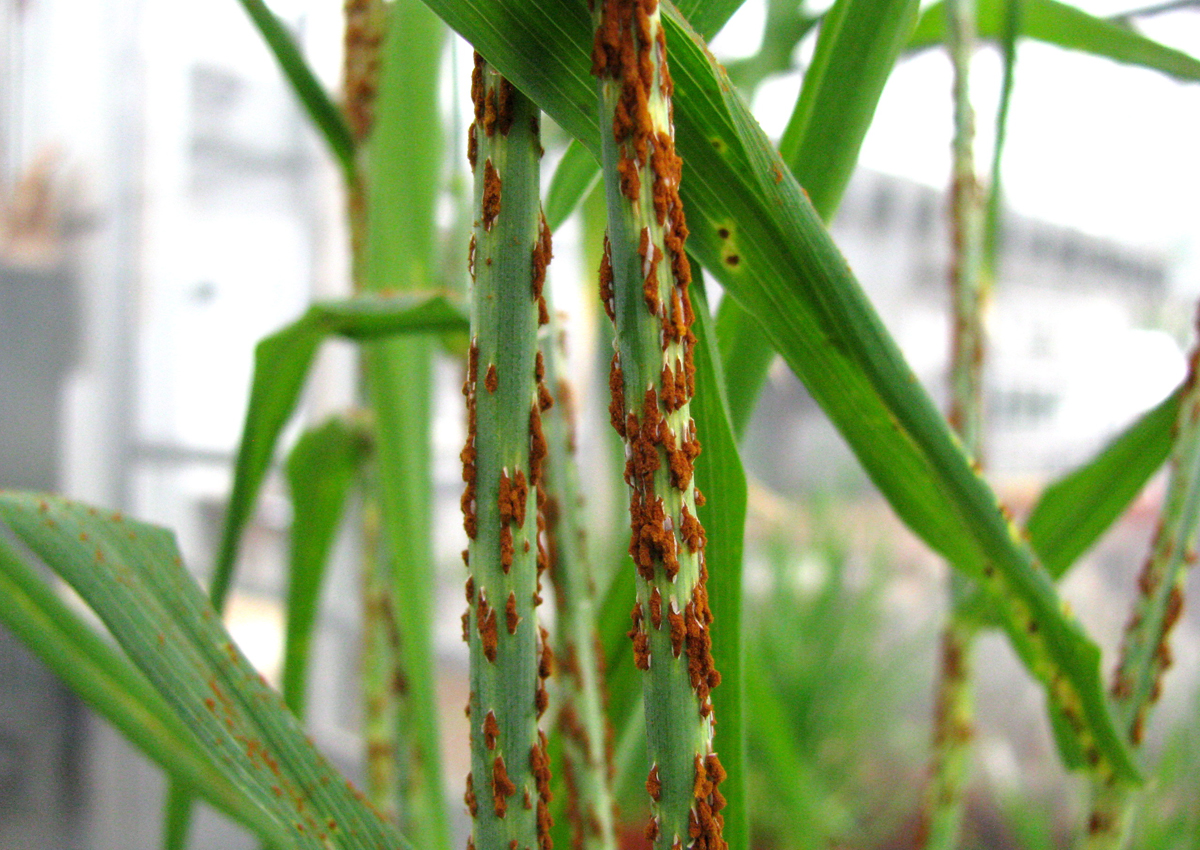
Scientists Uncover Secrets of Wheat Killer Ug99
November 13, 2019| |
A group of researchers from Australia, the United States, and South Africa has uncovered the 20-year-old mystery surrounding the origins of the world's deadliest strain of wheat stem rust which threatens global food security. Their research, published in Nature Communications, reveals that the devastating Ug99 strain of the wheat stem rust fungus was created when different rust strains fused to create a new hybrid strain through the process called somatic hybridization. This process enables the fungi to merge their cells together and exchange genetic material without sexual reproduction.
The study found that half of Ug99's material came from a strain that has been in southern Africa for more than 100 years and also occurs in Australia. It shows that other crop-destroying rust strains could hybridize in other parts of the world, and evidence of this was found in the study. This means that Ug99 could once again exchange genetic material with other pathogens to create a new enemy.
Earlier this year, the Commonwealth Scientific and Industrial Research Organisation (CSIRO), the University of Minnesota, and the 2Blades Foundation achieved good results in wheat resistance by stacking five resistance genes into one wheat plant to fight wheat stem rust. This is the result of a collaboration between scientists from CSIRO, the University of Minnesota, University of the Free State, and Australian National University.
Dr. Melania Figueroa's group worked on the sequence of Ug99, while the team led by Dr. Peter Dodds sequenced Pgt 21, a rust strain that was first seen in South Africa in the 1920s and believed to have been carried to Australia in the 1950s by wind currents. The groups found that the two pathogens share an almost identical nucleus and therefore half of their DNA. "This discovery will make it possible to develop better methods to screen for varieties with strong resistance to disease," Dr. Figueroa said.
For more details, read the CSIRO news release.
| |
You might also like:
- Researchers Identify Gene that Enables Wheat Resistance to Stem Rust
- University of Sydney Scientists Help Create Wheat Resistant to Stem Rust
- Scientists Identify Stem Rust-resistant Wheat Landraces
Biotech Updates is a weekly newsletter of ISAAA, a not-for-profit organization. It is distributed for free to over 22,000 subscribers worldwide to inform them about the key developments in biosciences, especially in biotechnology. Your support will help us in our mission to feed the world with knowledge. You can help by donating as little as $10.
-
See more articles:
-
News from Around the World
- Biotechnology Tipped to Revolutionize Uganda's Agriculture
- Precision Gene Editing Used to Increase Canola Yield
- Consumers' Preference to Buy Unlabeled Produce Increases after Exposure to GMO-labeled Products
- Filipino Regulators and Experts Dialogue on Biotech Issues and Concerns
- Scientists Uncover Secrets of Wheat Killer Ug99
- EFSA Scientific Opinion Concludes Four-Event Stack GM Soybean As Safe As Non-GM Comparator
-
Research Highlights
- Flowering Mechanism in Brassica rapa Leafy Vegetables Now Revealed
- Scientists Develop New Recombineering Toolset That Can Speed GM Plant Research
-
Plant
- Transgene-Free CRISPR-Edited Plants Indentification Using DsRED Fluorescence
- CRISPR-Cas9 Used for Virus-Mediated Genome Editing in Plants
-
Read the latest: - Biotech Updates (December 3, 2025)
- Gene Editing Supplement (November 26, 2025)
- Gene Drive Supplement (February 22, 2023)
-
Subscribe to BU: - Share
- Tweet

